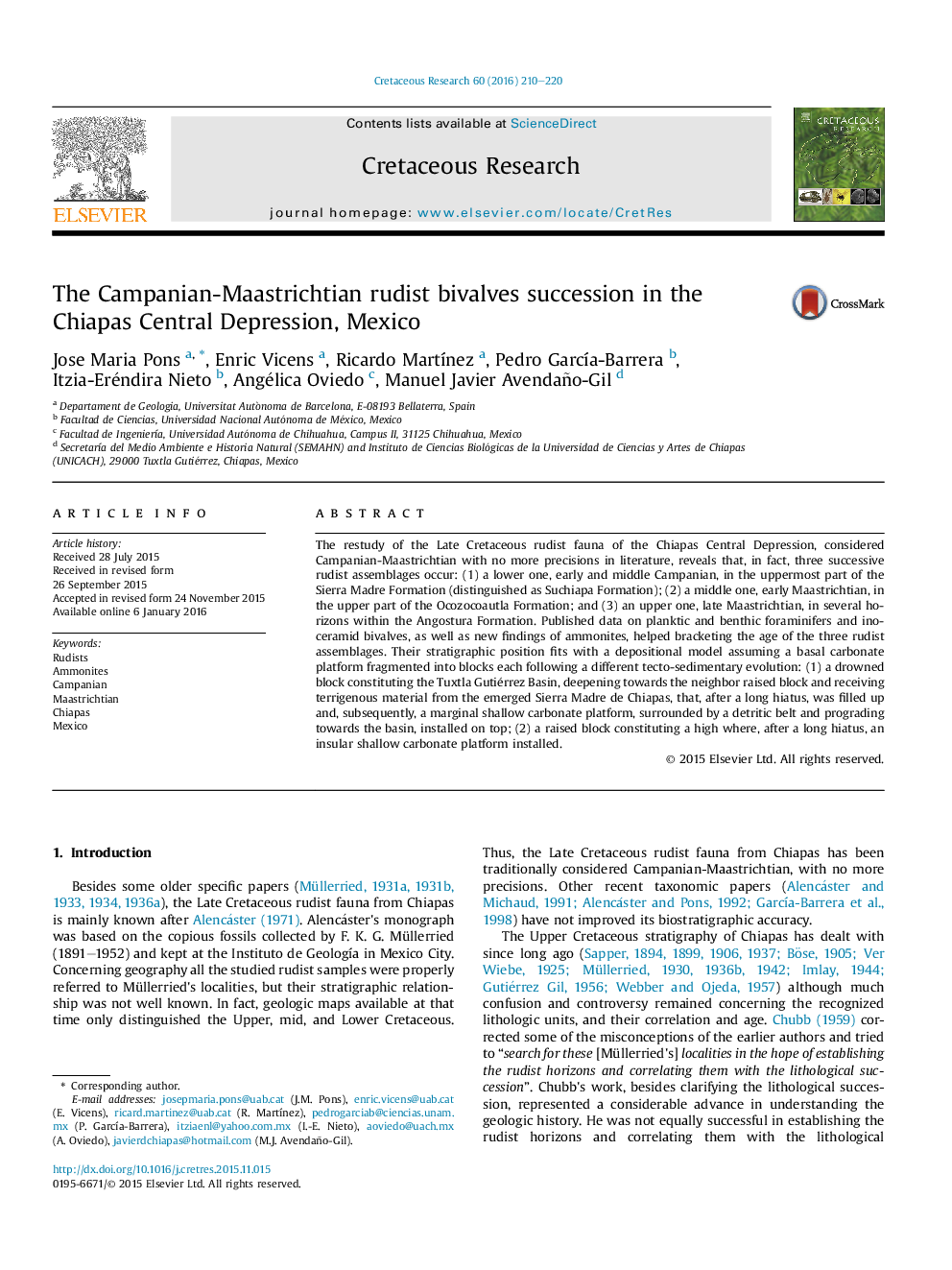| Article ID | Journal | Published Year | Pages | File Type |
|---|---|---|---|---|
| 4746774 | Cretaceous Research | 2016 | 11 Pages |
•Three different age rudist assemblages distinguished in the Campanian-Maastrichtian of Chiapas.•Rudist assemblages dated by ammonites and benthic and planktic foraminifers occurrences.•Ocozocoautla and Angostura formations have different age and lie one above the other.•Important hiatuses evidenced between Sierra Madre, Ocozocoautla, and Angostura formations.
The restudy of the Late Cretaceous rudist fauna of the Chiapas Central Depression, considered Campanian-Maastrichtian with no more precisions in literature, reveals that, in fact, three successive rudist assemblages occur: (1) a lower one, early and middle Campanian, in the uppermost part of the Sierra Madre Formation (distinguished as Suchiapa Formation); (2) a middle one, early Maastrichtian, in the upper part of the Ocozocoautla Formation; and (3) an upper one, late Maastrichtian, in several horizons within the Angostura Formation. Published data on planktic and benthic foraminifers and inoceramid bivalves, as well as new findings of ammonites, helped bracketing the age of the three rudist assemblages. Their stratigraphic position fits with a depositional model assuming a basal carbonate platform fragmented into blocks each following a different tecto-sedimentary evolution: (1) a drowned block constituting the Tuxtla Gutiérrez Basin, deepening towards the neighbor raised block and receiving terrigenous material from the emerged Sierra Madre de Chiapas, that, after a long hiatus, was filled up and, subsequently, a marginal shallow carbonate platform, surrounded by a detritic belt and prograding towards the basin, installed on top; (2) a raised block constituting a high where, after a long hiatus, an insular shallow carbonate platform installed.
Graphical abstractFigure optionsDownload full-size imageDownload as PowerPoint slide
